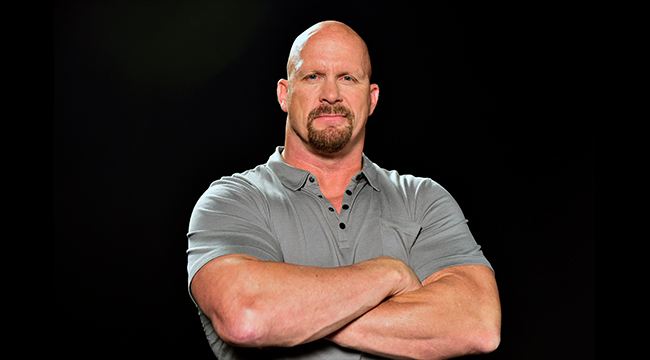
Happy Austin 3:16 Day, or as non-wrestling fans know it, “Is it still okay to eat that leftover pie you forgot to put in the fridge” Day. By now, Austin 3:16 is timeless; it was the birth of a whole new era, and an important cog in the gears of the Monday Night Wars. Stone Cold Steve Austin cut the following promo on Jake The Snake Roberts after winning the King of the Ring tournament in 1996:
The first thing I want to be done is to get that piece of crap out of my ring. Don’t just get him out of the ring—get him out of the WWF. Because I proved, son, without a shadow of a doubt, you ain’t got what it takes anymore. You sit there and you thump your Bible and you say your prayers and it didn’t get you anywhere. Talk about your Psalms, talk about John 3:16 — Austin 3:16 says I just whipped your ass. All he’s gotta do is go buy him a cheap bottle of Thunderbird and try to get back some of that courage he had in his prime.
As the King of the Ring, I’m serving notice to everyone of the WWF Superstars — I don’t give a damn what they are — they’re all on the list and that’s Stone Cold’s list and I’m fixin’ to start running through all of ‘em. Piss off. As far as this championship match is considered, son, I don’t give a damn if it’s Davey Boy Smith or Shawn Michael- — Steve Austin’s time has come. And when I get the shot, you’re looking at the next WWF Champion, and that’s the bottom line ‘cause Stone Cold said so.
For the tl;dr crowd (or “too long; didn’t memorize”), you can also watch the entire speech on the WWE Network, or, should you feel more inclined, just right here in glorious YouTube form:
To celebrate, let’s take a look back at the origins and aftermath of one of the most iconic phrases in pro wrestling history.
1. No Michael P.S. Hayes, No Austin 3:16
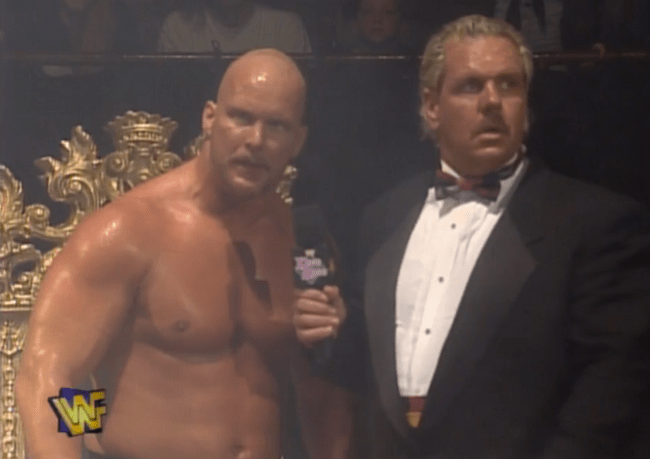
Now, this falls squarely in the wheelhouse of people who will inevitably respond with “what the heck, of course we know that. Earlier today I saw someone say they didn’t remember King of the Ring 1996 because it happened before they were born. After taking a personal moment to remember that I’m nine days away from turning 30 and then taking some deep breaths into a paper bag, I figured the actual origins would be a good place to start.
Initially, Steve Austin was never supposed to compete in King of the Ring. In what’s described as some “disciplinary measures,” Austin was put into the tournament as a last-minute decision. It’s said that Austin’s push was supposedly meant for Triple H, which is a real shame. That guy can never catch a break, huh. Any cursory knowledge of Austin’s career will tell you that he was the best at taking the meager opportunities handed to him and spinning them into some of the most memorable and beloved character work of his career. This was no exception.
During his first match of the night, Austin got kicked in the mouth by Marc Mero so hard he had to be taken to the hospital. 14 stitches later, Austin arrived back at the show after Jake the Snake Roberts had already cut his promo for their match set for later in the evening.
Michael P.S. Hayes – former Freebird, Badstreet occupant, then ring announcer under the name Dok Hendrix — told Austin about the promo, letting him know that he was to wrestle Roberts for the title of King of the Ring, and that he had cut a religious-based promo on Austin.
Now, this timeline does gets a little squicky: in Austin’s book, it’s intimated that he found out before going to the hospital, but in later interviews and retrospectives it’s said that he found out he was going to go over in the final after coming back. Either way, without that conversation with Hayes, the idea to respond in kind would have never been born. Hayes is now in the WWE Hall of Fame along with the rest of the Fabulous Freebirds. It’s probably not for his association with this famous promo, but it isn’t NOT for that.
2. To Take It Even Further – No Rainbow Man, No Austin 3:16
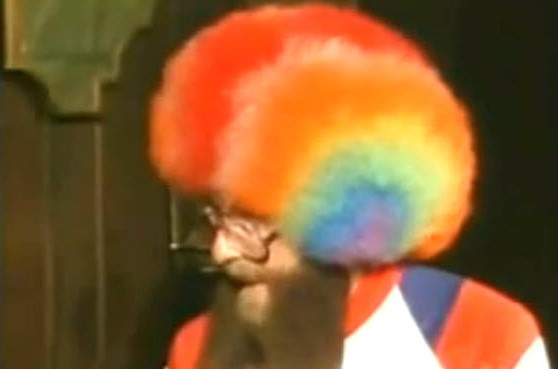
Again, speaking to those of A Certain Age, it wasn’t uncommon to see JOHN 3:16 signs in the crowds at sporting events, or really anyplace someone could possibly be noticed holding up a sign. The pervasive Biblical passage is described as God’s word in a nutshell: “For God so loved the world, that he gave his only begotten Son, that whosoever believeth in him should not perish, but have everlasting life.” You can find that inscribed on the bottom of retail chain Forever 21’s bags, or printed on the underside of In-N-Out Burger cups. It’s a way to advertise faith-based beliefs without being overly proactive and in-your-face.
From the late Seventies to the early Nineties, a man named Rollen Stewart would attend various sporting events, donning a multicoloured clown wig and brandishing a JOHN 3:16 sign. For three years he was simply The Rainbow Man, but after the 1980 Super Bowl he was inspired by a televangelist to become a Born Again Christian, and integrate the bible passage into his “act.” From then on he would put himself in view behind home plate at MLB games, between goal posts at NFL games, even going so far as holding a sign up behind Jack Nicklaus at the Masters. One man’s crazy is another’s pop-culture phenomenon, and the trend of holding up the signs extended far beyond the lone act of a guy who loved Jesus and clown wigs.
Steve Austin said that it was the first thing that came into his mind, given that he had often seen signs of the scripture held up at football games. Were it not for Rollen Stewart and his effect on sports culture, Steve Austin may not have had the effect on pro wrestling that he did.
That said, it’s important to note that Stewart is currently serving three life terms in California for locking himself in a Los Angeles hotel during an eight-hour standoff with police and a SWAT team, holding a maid hostage, and threatening to shoot down airplanes as they took off and landed at nearby LAX. So, y’know … maybe think twice about trying to become the next Brock Lesnar Guy.
3. Vince McMahon Didn’t Believe In Stone Cold
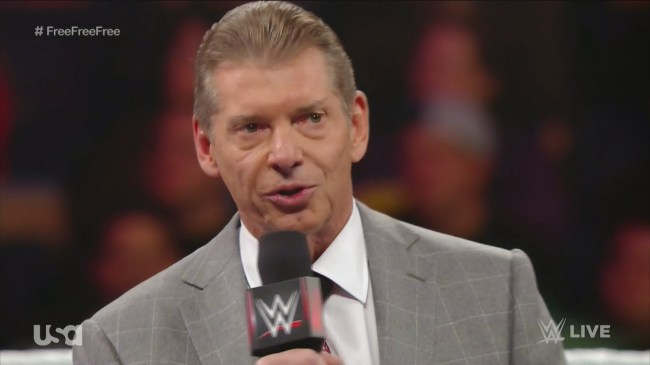
Austin 3:16 was the catchphrase, Stone Cold Steve Austin was the character. King of the Ring 1996 was the birth of a new Steve Austin. The King of the Ring promo was entirely unscripted, and not even Vince McMahon knew what was going to come out of his mouth. His promo signaled a sea change in wrestling, some even crediting this as the exact moment the Attitude Era began. But change is hard, and what seems like such a simple part of history was still something that had to be fought for.
After King of the Ring, Austin found himself with more popularity and much more screentime. He had liked the way Bruce Willis wore his hair in Pulp Fiction, frustrated with the similar thinning of his hairline, so he got a buzz cut. Then he saw Woody Harrelson in Natural Born Killers, and decided to go completely smooth. He grew out his facial hair, and started to feel as “Stone Cold” as he looked. His promos got meaner, really cutting into wrestlers, but then he noticed that the brunt of what he said was being edited out. From his book The Stone Cold Truth:
We were in a real snowy town in the northeast, at the old building in Lowell, Massachusetts, and I called Vince aside. I said, “Vince, can I talk to you?”
He said, “Yeah.”
I said, “Man, what’s going on? It seems like every time I say something, y’all take it back to the shop and chop all my stuff out.”
He said, “Well, Steve, your stuff is making the people laugh back in the studio. We are concerned because, as a heel, we want the fans to not like you.”
An impassioned argument followed, with Austin pointing out that, compared to others in the then-WWF, his personality was all he had. After that, Vince started to let go more, and we were given the Stone Cold Steve Austin we know today.
Austin has always been a proponent for wrestlers to stand up to creative, and fight for themselves and their characters. We know that this does not always work, and we seem to be in a period of time where that fear of the new overrides any chance at innovation or change within WWE.
While the Attitude Era is either what brought people in (or drove them out, depending on how much you liked being marginalized), one of the greatest things about it was that willingness to let someone be the anti-hero. Cartoonish standards of black and white, heel-face dynamics are great and play a key role in wrestling of any time period, but those shades of gray are what really made characters shine.
In retrospect, it’s hard to believe that calling someone the “Sh*tman” could be such an important factor in changing the face of wrestling forever, but hey, the Nineties were a wild time. I mean jeez, remember how popular the Spin Doctors were?
I really hope you do so I don’t have to get that paper bag out again.
3.16: Eventually, It All Came Back Together
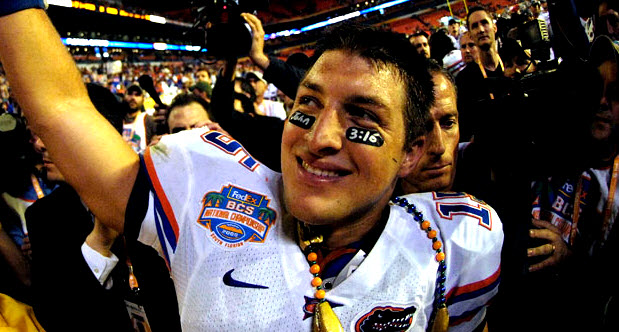
Okay, so maybe this is technically No. 4, but “Four Things About” something or other doesn’t sound anywhere near as catchy, and I guess, you know, it’s 3.16 because Stone Cold said so. Ha! I bet you thought you could go this whole list without a hackneyed quip like that! Well, you’re wrong, and I am never above hackneyed quips.
Back in 2010, the NCAA sent four rule changes down the pipe. The most minor one, however, was the one that caused the most fuss. Tim Tebow – Heisman winner, famous kneeler – had written 11 different bible verses on his eye black during game day, most recognizably John 3:16. The rule against messages in eye black fueled the debate about the place of religious freedom in sport, one that I’m not even going to begin to get into because hey, I just wanna write about an angry bald dude here. Let’s just say it was polarizing to a degree that is well above my pay-grade.
Tim Tebow and his faith were inextricable, but it was a January 2012 NFL game that solidified the link between him and the passage from John. At that point, Tebow was playing for the Denver Broncos. That Sunday he threw for 316 passing yards, his ten completions averaging 31.6 yards a piece. Tebow had often said that John 3:16 was his favorite scripture, and much like Austin, the scripture and this game helped launch him into the pop culture stratosphere.
Afterwards, Steve Austin said that if Tebow could throw for another 316 yards against the New England Patriots, “3:16” would belong to him:
I first started following Tebow’s career when he was a Florida Gator – not because of him, and hell, not even because of the Gators, but because I was a fan of then-Florida coach Urban Meyer. Because of that I witnessed Tebow’s phenomenal collegiate career. Now he’s a pro, and sure he’s having a great run right now, but it’s a whole new season next year. We’ll see how it plays out and if he’s even starting. I’m no football analyst or a real religious person, but I think he’s a great role model for young kids and I wish him the best. So yeah, if he can throw for another 316 yards and beat the New England Patriots, the “3:16” is all his. – WWE.com
Tebowmania is no longer running wild, but Austin 3:16 endures. From my middle-school teachers wondering who this Stone Cold fellow was who set the bottom line against doing homework, to the Austin 3:16 shirts remaining the best-selling merchandise in all of WWE/WWF history, to the fact that we’re still writing nearly two years after its 20th anniversary, the effect is undeniable. And who could sum it up better than Austin himself from that same interview?
“Austin 3:16 says I just whooped your ass” was prophetic, and it became a phrase that defined my career. It is still one of the most popular phrases in WWE history, and anyone who doesn’t like it can piss off.
2016 marked the 20th anniversary of the iconic promo, and WWE Superstars of our current time took great delight in recreating it. There’s a whole generation of people who are actually winning titles right now in WWE who were watching the Austin 3:16 promo as children and influenced greatly by it. It’s the gift that keeps on giving.
This one is going to live forever. Happy 3:16 Day, everyone.
This is an updated version of a post that originally ran on March 16, 2015
Subscribe, rate, review the With Spandex podcast!
[protected-iframe id=”3fef4044e5507b6fcb78c3b3c0a08208-60970621-10222937″ info=”Omny” width=”100%” height=”180px”]






